Blowsy autumn beauty at Rollingwood Waterwise Garden
Last Saturday, a drizzly, cool day, I returned to the West Austin neighborhood of Rollingwood to see how the waterwise garden at city hall had fared over the summer. Designed by Scott Ogden and Lauren Springer Ogden, the garden was installed two years ago. Following an initial harsh winter and now an unusually wet year, it’s really filling in. Ornamental grasses like Muhlenbergia ‘Pink Flamingos’ and Gulf muhly (Muhlenbergia capillaris) are showy in the rain garden, a shallow basin designed to hold runoff and give it time to soak into the soil.
For a fun comparison, here’s the same view in April of this year. Before the grasses grew tall, you can see the contours of the rain garden.
‘Pink Flamingos’ muhly on the left, and Muhlenbergia capillaris ‘White Cloud’ on the right
Planted high on gravelly berms, golden barrel cactus and other dry-loving plants look happy. ‘Strawberry Fields’ gomphrena adds dots of fiery color.
In the hell strip (a term coined by the designer, Lauren Springer Ogden), flame acanthus (Anisacanthus quadrifidus var. wrightii) wends around a spineless prickly pear and a pretty yucca with white-edged leaves. I didn’t see a plant tag nearby; anyone know the ID? Update: It’s Yucca constricta.
Whale’s Tongue agave, low grasses, and a cheery groundcover of four-nerve daisy (Tetraneuris scaposa) Thymophylla (formerly Dyssodia) pentachaeta.
A gravelly berm near the city hall entrance is smothered in more four-nerve daisies Thymophylla pentachaeta.
Aloes cluster, starfish-like, around a boulder.
I really love this spiraling council ring of limestone blocks, with stacked limestone pieces to fill in the gaps. ‘Green Gem’ boxwood topiaries enhance the circular theme and add evergreen color.
Located under the shade of live oaks, this part of the garden is, I believe, known as Council Oaks.
A wider view
Looking in the other direction across the garden
‘Green Goblet’ agave (I think), one of my favorites
That dusty, blue-green coloring at its base is lovely.
A rugged limestone stair leads up a slope at one end of the garden. A unique mix of agaves, columbines, ferns, tradescantia, sedum, salvia, grasses, lantana, and yucca grow here. Pacific chrysanthemum (Chrysanthemum pacificum) flowers at the base of the slope.
Looking across the rain garden, in all its feathery fall glory
White-blooming autumn sage (Salvia greggii) brightens the hell strip. Pink autumn sage and bamboo muhly are visible in the background.
This is eye-catching: ‘San Carlos’ firecracker fern (Russelia coccinea ‘San Carlos’). Shazam!
Rollingwood’s residents were far-sighted in bringing this sustainable garden to fruition, and (even smarter) budgeting for its continuing care by a design team that fearlessly experiments with tough yet beautiful native and adapted plants. It’ll be fun to watch this garden continue to evolve. I imagine it will inspire many other lawn-gone gardens around the neighborhood.
I do wish, however, that the garden had its own website, or at least a dedicated webpage on the City of Rollingwood’s site. I can find very little information about the garden online, except from outside sources like the Statesman, Central Texas Gardener, neighborhood resident Deb at Austin Agrodolce, and my own post about the garden last spring. I’d love to be able to read about the garden’s origin (how the idea arose, and how funds were raised, which will be useful for other groups looking to do something similar); how the design was developed (from the designers’ perspective, including special challenges that were overcome); a detailed and updated plant list organized by section of the garden, or by sun/shade conditions; and a monthly update on maintenance (to provide real-life info about what a garden like this requires and what to do at certain times of the year). Such information would extend the reach of this garden, which is hidden deep within the winding roads of Rollingwood, and turn it into a teaching garden for the whole city, region, and even the world.
All material © 2006-2015 by Pam Penick for Digging. Unauthorized reproduction prohibited.


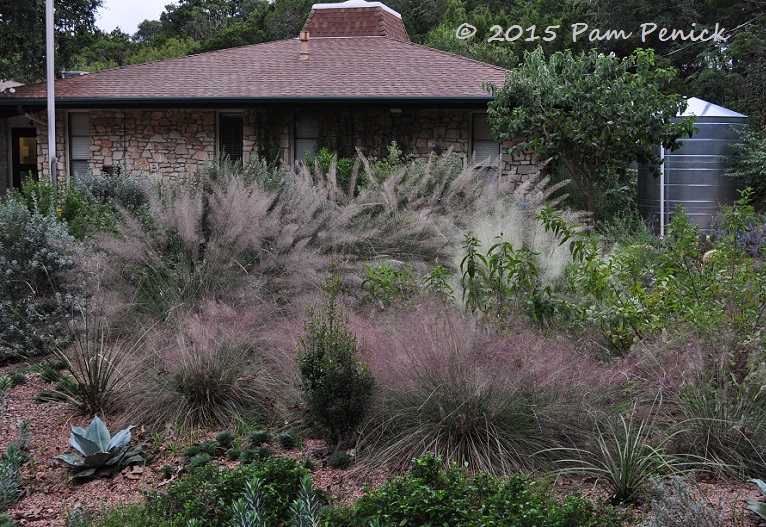
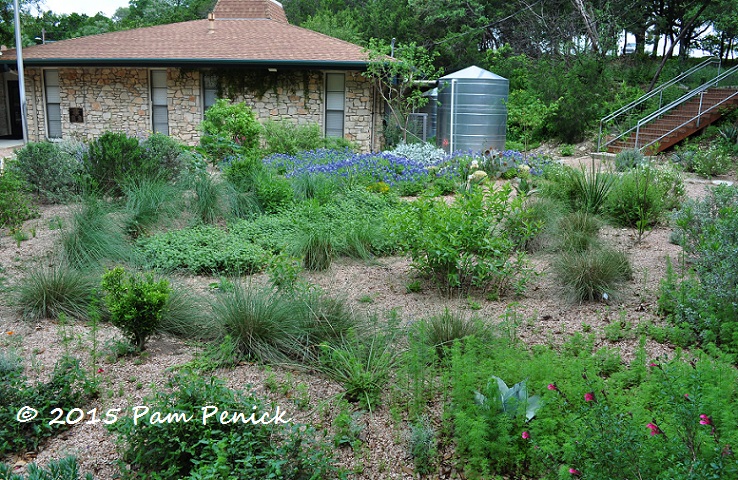
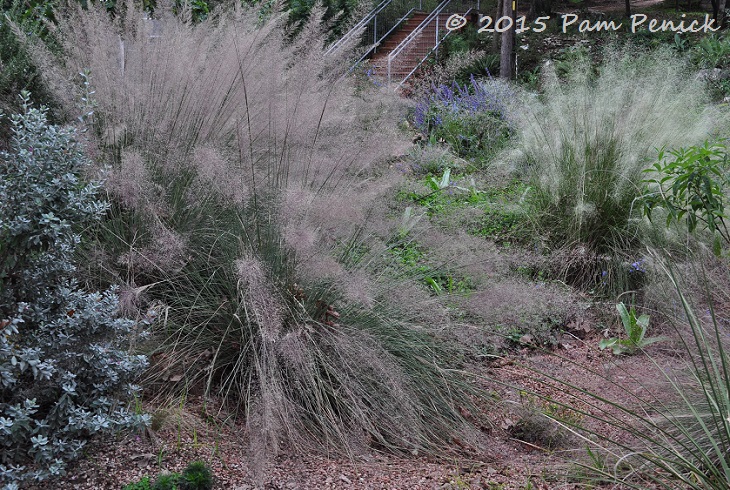
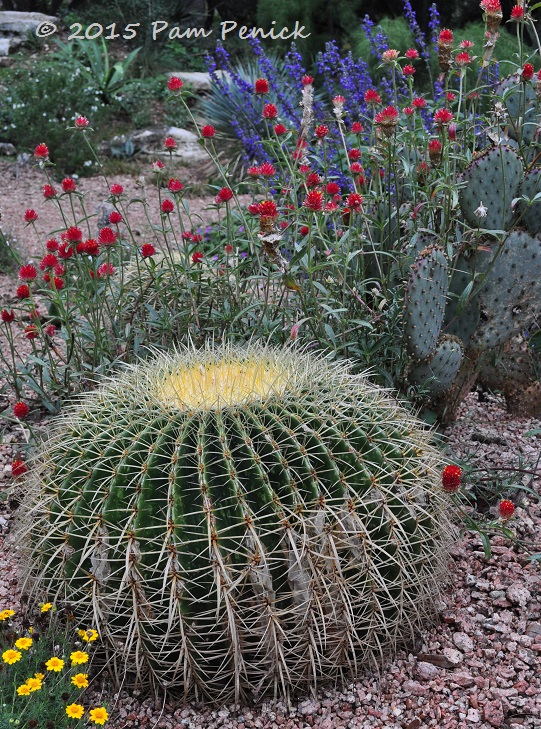
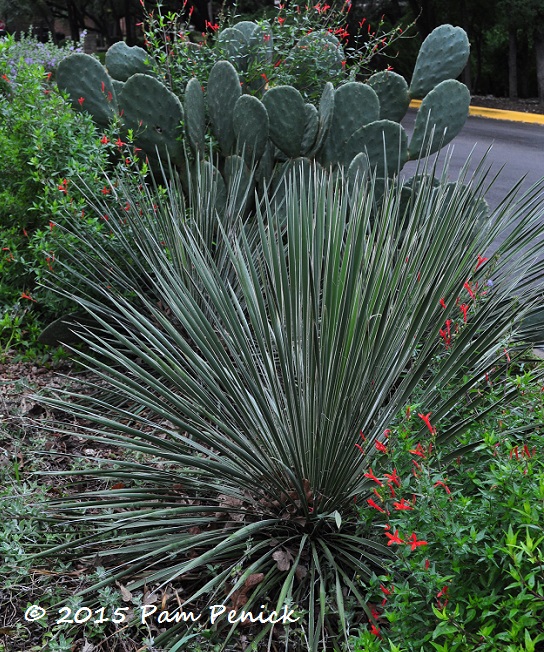
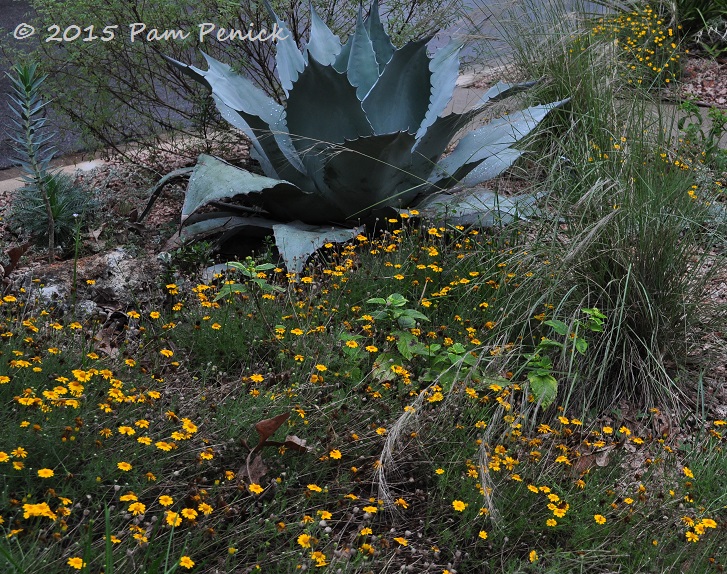
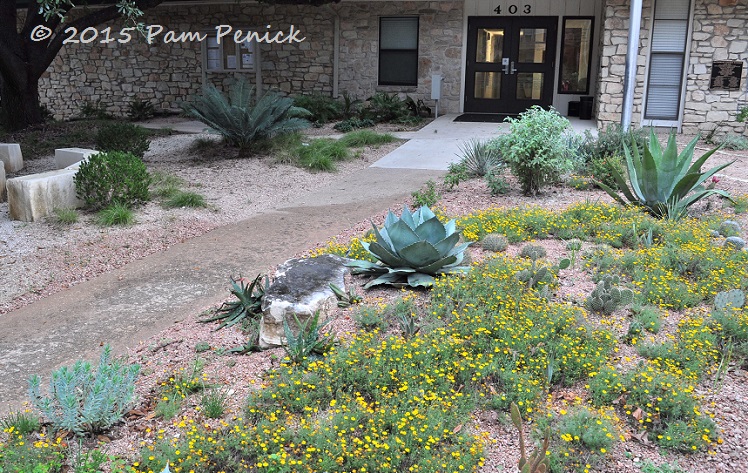
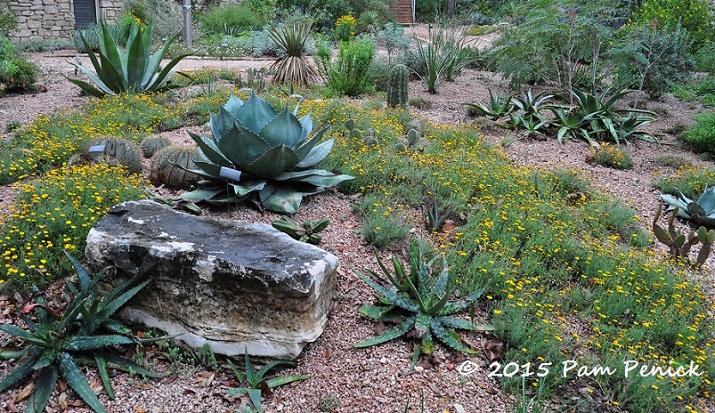
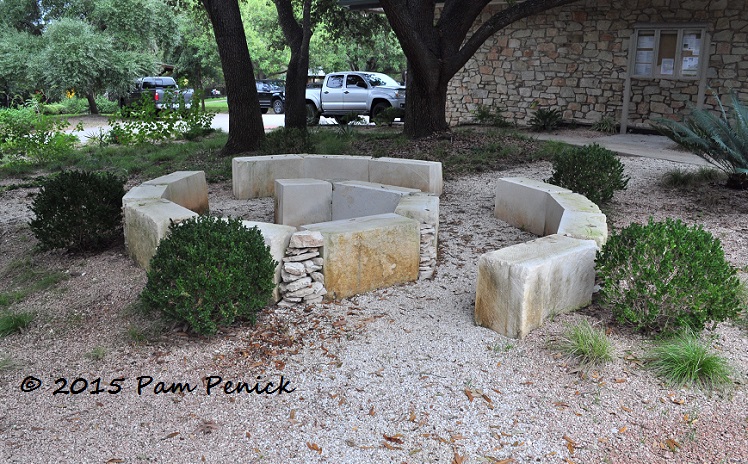
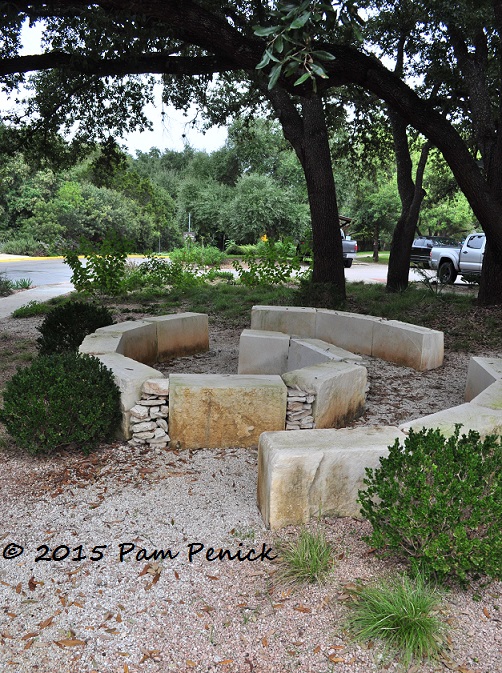
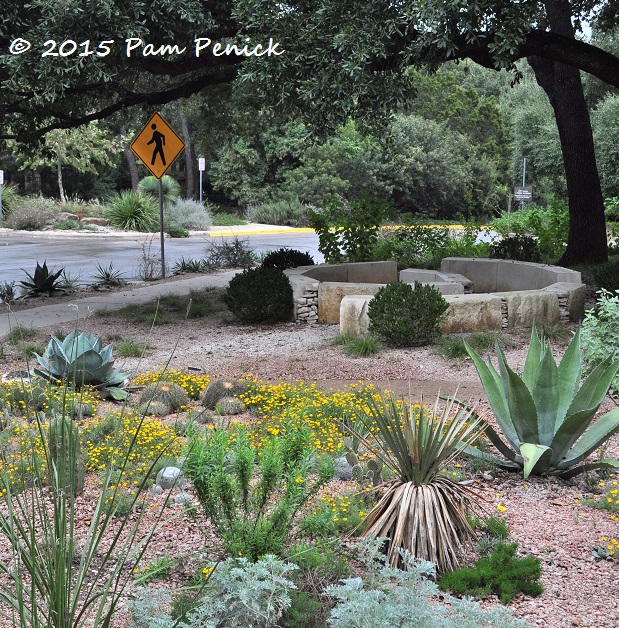
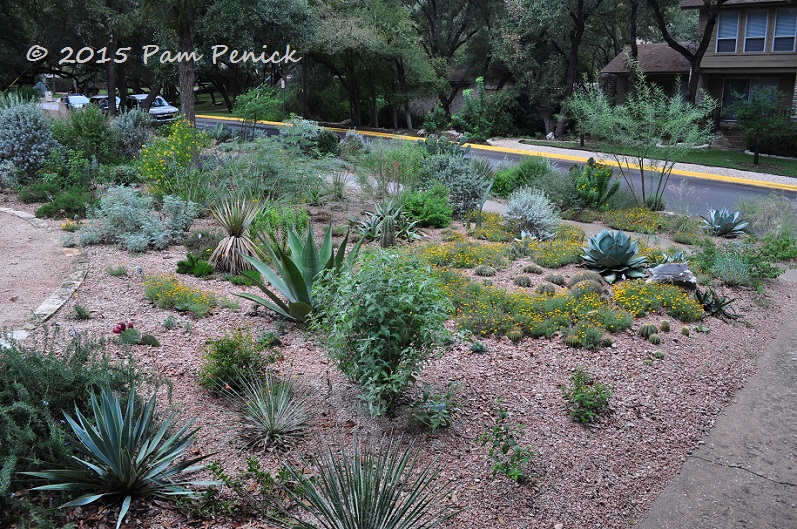
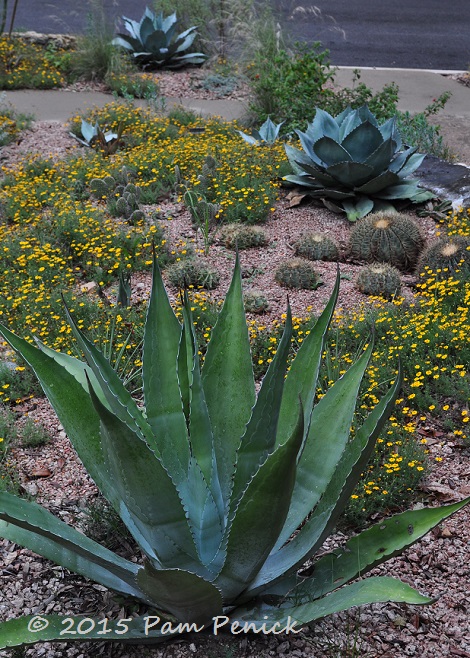
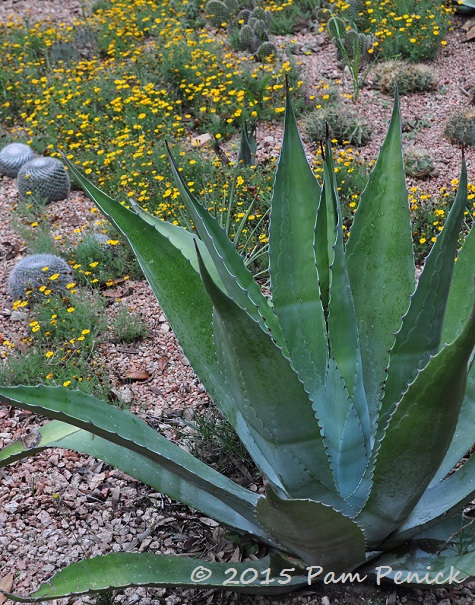
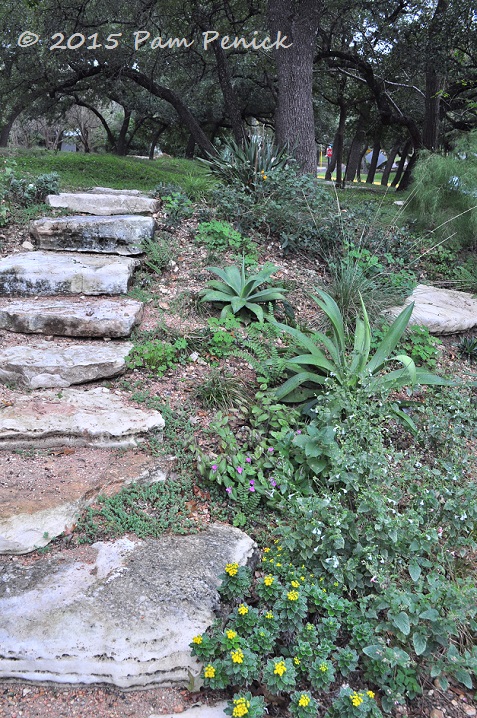
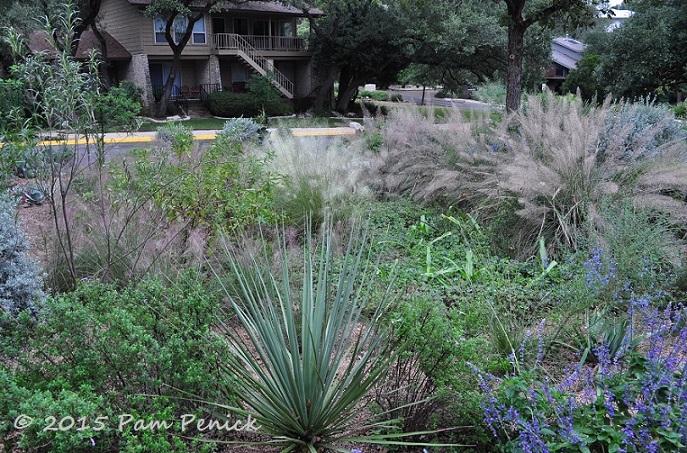
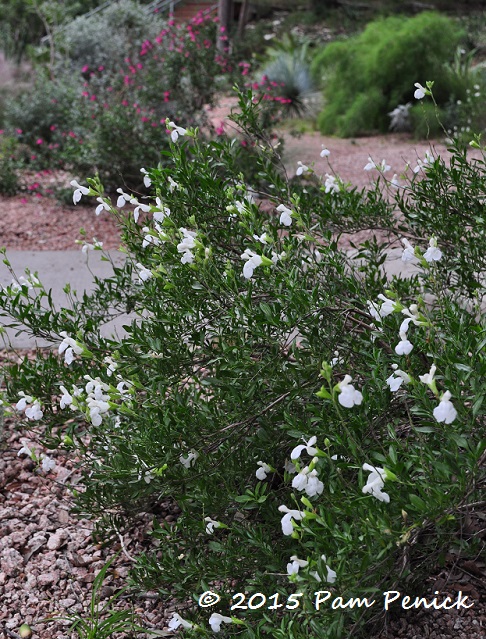
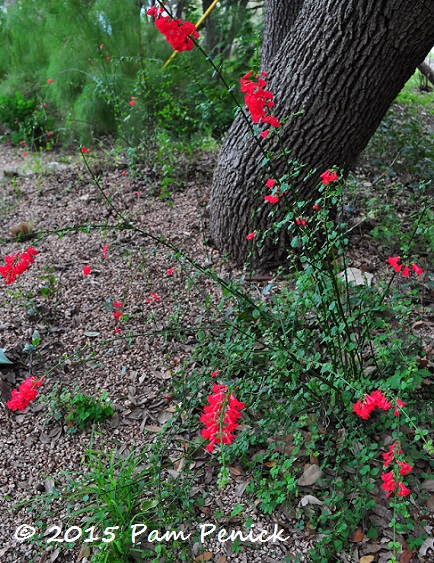
This garden is a good resource.
I know there are deer there. I see things I might try here.
Thanks for the tour.
Yes, lots of deer. I wonder how their hunger compares to your deers’ hunger — i.e., off the charts. —Pam
I see I don’t have nearly enough Four-nerve daisy in my front garden! The use of boxwood is bold but works out just right since the spiral would look bland without the structure of lightly trimmed evergreens.
There is so much to learn from this garden, I hope they take your advice and post more info about the garden.
I really love four-nerve daisy for its evergreen foliage and nearly year-round flowering. The deer ate it in my garden, but they obviously are leaving it alone here. —Pam
Update: The designer has left a comment explaining that it’s not four-nerve daisy (the deer ate that) but Thymophylla pentachaeta. —Pam
This entire garden is a shazam. I have never heard of a fire cracker fern. It is gorgeous. The town should be proud of this garden. It is a beauty.
Firecracker fern comes in many variations here: red or pale-yellow flowers and needle-like or rounded leaves. It’s a subtropical plant that can be a wee bit tender here in zone 8b, and it has a tropical look even though it’s not terribly thirsty. —Pam
What a beautiful garden! Cactus, yucca, agaves, and wildflowers — my idea of heaven.
Also, re “pretty yucca with white-edged leaves”: I have a little Yucca glauca here that fits that description. Wonder if that’s it.
Could be, Luisa. Thanks for the possible ID. —Pam
Luisa, the designer says in a comment below that it’s Yucca constricta. —Pam
Hi, the Lauren half of the design and maintenance team here. Thanks so much for such a nice writeup and truly awesome pix, Pam! Couple of plant IDs–our native Yucca constricta in the pic with flame acanthus. Not fournerve daisy, it’s Thymophylla(formerly Dyssodia) pentachaeta, a shortlived selfsowing desert perennial that blooms pretty much all year. Fournerve daisy was browsed heavily there and in my estimation is not as good a visual contract to the powerful forms of the agaves and cacti, Thymophylla is much finer textured and more mounding. As for deer, this is the most deer infested place i have ever attempted to create a garden in. They tasted EVERYTHING after planting and we had to replant a ton of things weekly that were pulled up and spit out. Things have gotten better over the past two years, the deer are less interested and ravenous, due probably to the novelty being over, the drought abating, and the plants now taking up minerals from the soil rather than from bland potting medium to manufacture their protective alkaloids. As for putting a bunch of info on a website, we do have an updated list of plants, maybe we can get Rollingwood to post it on their city site somewhere. Neither of us have the time to write a lot about this garden, we are hardpressed to get the maintenance done within the meager budget. Maybe someday. Gotta make a living! Thanks again. It has been a really fun project and we are happy to get the rare opportunity to continue to steward and improve and experiment with our work there. We just planted several dozen new plants last month, many from our home garden.
Lauren, thanks so much for stopping by and providing definitive IDs for those two plants. I’m intrigued by the Thymophylla pentachaeta as a four-nerve daisy substitute, because the deer in my garden like to eat them too. Is there a local source for it? —Pam